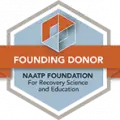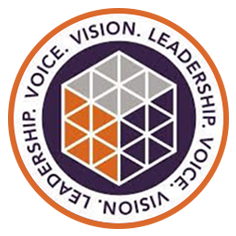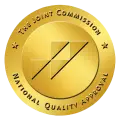Childhood trauma has a powerful impact that can carry into adulthood, shaping how a person thinks, feels, behaves, and connects with others. Whether the trauma comes from emotional neglect, various forms of abuse, or witnessing distressing events, its effects can linger well into later life—often without the individual fully recognizing its influence.
Understanding what childhood trauma looks like in adults is an important step in offering compassion, healing, and support. This guide explores what trauma is, how it evolves into adulthood, and the major signs that often point toward unresolved childhood wounds.
Key Takeaways
- Childhood trauma can affect emotional regulation, relationships, and self-esteem well into adulthood—often in ways people don’t immediately recognize.
- Common signs include anxiety, fear of abandonment, emotional numbness, and self-sabotaging behaviors, all of which stem from early unmet needs or harmful experiences.
- Healing is possible through trauma-informed care, therapy, and supportive recovery programs, especially when addiction is also involved.
What is Childhood Trauma?
Question: What is childhood trauma?
Answer: Childhood trauma refers to emotionally painful or distressing experiences that occur before the age of 18. These events—such as abuse, neglect, violence, loss, or chronic instability—overwhelm a child’s ability to cope and can shape how they think, feel, and behave later in life. Trauma impacts the developing brain, influencing emotional regulation, relationships, stress response, and overall mental health well into adulthood.
Understanding childhood trauma is essential because it often contributes to mental health challenges, substance use, and long-term behavioral patterns. Early support and trauma-informed care, like Magnolica City Detox, can help individuals heal and build healthier coping skills.
Understanding Trauma and C-PTSD
Trauma is an emotional response to an overwhelming event—or repeated events—that exceed a person’s ability to cope. Children are especially vulnerable, and experiences like emotional neglect, physical abuse, loss, or witnessing violence can deeply affect their development.
Complex Post-Traumatic Stress Disorder (C-PTSD) often arises from ongoing or prolonged trauma, especially during childhood. While PTSD typically results from a single event, C-PTSD involves long-term exposure to distressing circumstances such as abuse, instability, or chronic fear.
People with C-PTSD may face:
- Difficulty regulating emotions
- Problems with identity and self-worth
- Challenges foto rming healthy relationships
- Sleep disturbances and chronic stress
Not everyone who experiences trauma develops C-PTSD, but the condition can play a major role in how childhood experiences affect a person later in life.
What is Childhood Trauma?
 Childhood trauma refers to emotional, psychological, or physical harm that occurs during a child’s formative years. These experiences can influence behavior, development, and mental health well into adulthood.
Childhood trauma refers to emotional, psychological, or physical harm that occurs during a child’s formative years. These experiences can influence behavior, development, and mental health well into adulthood.
Common sources of childhood trauma include:
- Physical or emotional abuse
- Neglect or emotional neglect
- Bullying
- Witnessing violence
- Living in unstable or unsafe environments
Trauma from childhood is not a sign of weakness. It is a sign that what happened was powerful enough to leave a lasting imprint. Recognizing and addressing these issues is a courageous and transformative step toward healing.
10 Signs of Childhood Trauma in Adults
Adults who experienced trauma in childhood may display certain emotional, psychological, or behavioral patterns. These signs vary widely—no two people respond to trauma in the same way.
Recognizing these indicators can help individuals understand themselves better and seek support when needed.
Early neglect or inconsistent caregiving can interfere with the development of healthy attachment.
Adults may experience:
- Fear of intimacy
- Clinginess or constant reassurance-seeking
- Pulling away from others unexpectedly
- Testing partners to confirm loyalty
These patterns often come from a deep desire to feel safe while simultaneously fearing vulnerability.
Adults with childhood trauma frequently struggle with anxiety that can manifest as:
- Persistent worry
- Panic attacks
- Fear of future danger
- Hypervigilance
This heightened state of alertness often develops as a survival mechanism in childhood but becomes exhausting and disruptive later in life.
Simple stressors may feel overwhelming, leading to:
- Emotional shutdown
- Irritability
- Avoidance
- Feeling helpless or out of control
Unresolved trauma can condition the brain to respond intensely to stress, making daily challenges feel unmanageable.
Adults may experience intense or rapidly shifting emotions because trauma once impaired their ability to self-regulate. This may lead to:
- Mood swings
- Emotional overreactions
- Miscommunication in relationships
- Feelings of shame or guilt afterward
Emotional dysregulation is one of the most common signs of childhood trauma.
Negative early experiences can lead adults to internalize harmful beliefs about themselves.
They may struggle with:
- Self-doubt
- Feelings of inadequacy
- Difficulty recognizing their strengths
These patterns often stem from messages absorbed in childhood—even if those messages were never spoken aloud.
Adults with childhood trauma may constantly worry about being rejected or left behind.
This fear can show up as:
- Clinginess
- Jealousy
- Difficulty trusting reassurance
- Avoiding relationships altogether
Sadly, these behaviors can create the very relationship problems the person fears.
Emotional pain can manifest physically. Many trauma survivors experience:
- Chronic pain
- Headaches
- Fatigue
- Digestive issues
When medical causes are ruled out, these symptoms may be rooted in unresolved emotional distress.
Some individuals cope by shutting down emotionally.
This may look like:
- Feeling detached from others
- Difficulty experiencing joy
- Avoiding uncomfortable emotions
Numbness is a protective mechanism, but over time, it limits connection, fulfillment, and emotional expression.
Many adults use alcohol or drugs to cope with anxiety, intrusive memories, or emotional pain.
This cycle:
- Creates temporary relief
- Masks deeper issues
- Often leads to addiction
Addressing trauma is essential for long-term recovery, which is why trauma-informed and dual-diagnosis treatment is crucial.
Self-sabotage can appear as:
- Procrastination
- Ruining opportunities
- Ending relationships prematurely
- Avoiding success out of fear
These patterns often come from internal beliefs formed in childhood—beliefs about worthiness, safety, and identity.
The cycle of self-medication can lead to a false sense of control, as individuals may feel empowered by their ability to manage their symptoms through substances. Yet, this often masks deeper issues that require professional intervention and support. The allure of these substances can be particularly strong in times of crisis, where the immediate effects overshadow the long-term consequences.
Understanding ACEs and Their Impact
 The Adverse Childhood Experiences (ACEs) framework helps professionals identify early traumatic experiences and understand their long-term implications.
The Adverse Childhood Experiences (ACEs) framework helps professionals identify early traumatic experiences and understand their long-term implications.
Examples include:
- Witnessing violence at home
- Parental separation
- Death of a parent or caregiver
- Living in poverty
- Having a parent with mental illness or addiction
- Experiencing discrimination
Higher ACE scores increase the risk of mental health challenges, health problems, and even addiction later in life. However—a high ACE score does not define a person’s future.
With support, therapy from behavioral and addiction treatment centers like Magnolia City Detox in Conroe, TX, and healthy coping tools, individuals can create safe, fulfilling, meaningful lives.
Childhood Trauma and Addiction: How They’re Connected
Childhood trauma often plays a major role in the development of addiction. Many people turn to substances as a way to:
- Numb emotional pain
- Escape intrusive memories
- Cope with stress or instability
- Feel temporarily in control
The brain’s response to trauma can affect reward pathways, making substances feel especially relieving—which increases the risk of developing a dependency. Trauma-informed and dual-diagnosis treatment is essential for addressing both the addiction and the underlying emotional wounds.
Heal from Trauma and Addiction at Magnolia City Detox
 At Magnolia City Detox, we understand how deeply childhood trauma and addiction can intertwine. Our programs provide compassionate, trauma-informed care that heals the mind, body, and spirit.
At Magnolia City Detox, we understand how deeply childhood trauma and addiction can intertwine. Our programs provide compassionate, trauma-informed care that heals the mind, body, and spirit.
We offer:
- Safe, medically supervised medical detox near Houston, TX
- Dual-diagnosis treatment
- Individual and group therapy
- Holistic healing approaches
- Supportive, judgment-free care
Freedom from addiction—and healing from trauma—is absolutely possible with the right support.
You deserve peace. You deserve healing. You deserve a life beyond survival.
Contact Magnolia Detox today to begin your journey toward recovery.

















